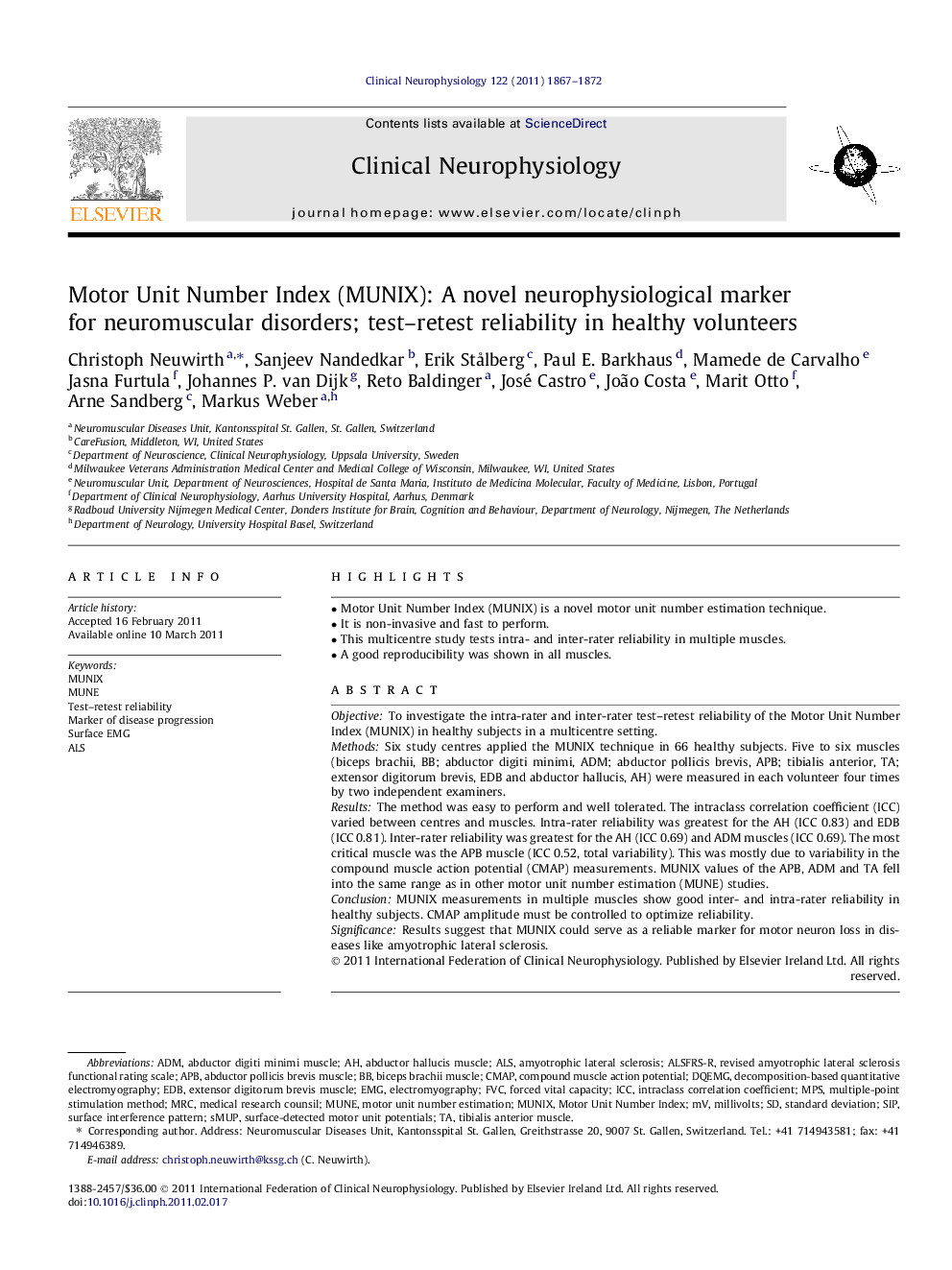| Article ID | Journal | Published Year | Pages | File Type |
|---|---|---|---|---|
| 3045798 | Clinical Neurophysiology | 2011 | 6 Pages |
ObjectiveTo investigate the intra-rater and inter-rater test–retest reliability of the Motor Unit Number Index (MUNIX) in healthy subjects in a multicentre setting.MethodsSix study centres applied the MUNIX technique in 66 healthy subjects. Five to six muscles (biceps brachii, BB; abductor digiti minimi, ADM; abductor pollicis brevis, APB; tibialis anterior, TA; extensor digitorum brevis, EDB and abductor hallucis, AH) were measured in each volunteer four times by two independent examiners.ResultsThe method was easy to perform and well tolerated. The intraclass correlation coefficient (ICC) varied between centres and muscles. Intra-rater reliability was greatest for the AH (ICC 0.83) and EDB (ICC 0.81). Inter-rater reliability was greatest for the AH (ICC 0.69) and ADM muscles (ICC 0.69). The most critical muscle was the APB muscle (ICC 0.52, total variability). This was mostly due to variability in the compound muscle action potential (CMAP) measurements. MUNIX values of the APB, ADM and TA fell into the same range as in other motor unit number estimation (MUNE) studies.ConclusionMUNIX measurements in multiple muscles show good inter- and intra-rater reliability in healthy subjects. CMAP amplitude must be controlled to optimize reliability.SignificanceResults suggest that MUNIX could serve as a reliable marker for motor neuron loss in diseases like amyotrophic lateral sclerosis.
Research highlights► Motor Unit Number Index (MUNIX) is a novel motor unit number estimation technique. ► It is non-invasive and fast to perform. ►This multicentre study tests intra- and inter-rater reliability in multiple muscles. ► A good reproducibility was shown in all muscles.
